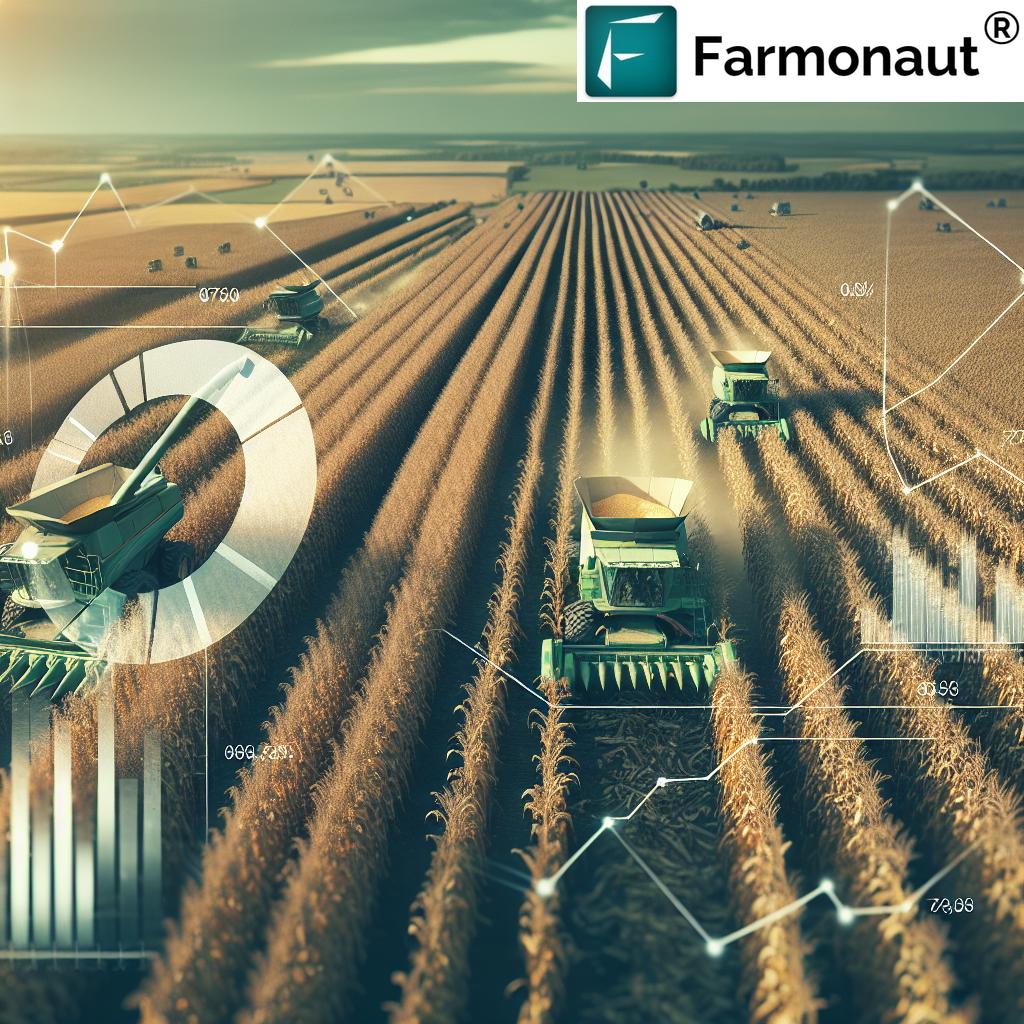Urgent: Ukraine’s Corn Seed Exports Surge, Igniting EU Farmers’ Fury and Trade Tensions

In a surprising turn of events, Ukraine’s corn seed exports to the EU have skyrocketed over the past two years, offering a glimmer of hope for the war-torn nation’s agricultural sector. However, this unexpected surge has sparked EU agricultural trade tensions and raised concerns among European farmers about what they perceive as unfair competition from Kyiv.
The Rapid Rise of Ukraine’s Corn Seed Exports
Ukraine has been leveraging the free trade terms granted by the European Union following Russia’s invasion, effectively reversing the bloc’s long-standing seed export trend to Ukraine. This shift has injected much-needed income into Ukraine’s farm industry, which has been grappling with significant losses due to the destruction of land and infrastructure in the ongoing conflict with Russia.
- Ukraine’s total seed exports, primarily corn (maize), reached $121 million in 2022
- Pre-war export levels stood at just $22 million in 2021
- Ukraine’s share in the EU corn seed market has surged from 0% to approximately 10% since 2021
While seeds represent only a fraction of Ukraine’s estimated $23 billion in agricultural exports last year, they offer significantly higher profits for farmers compared to bulk crops like corn and wheat. This profitability has been crucial for the survival of Ukrainian seed producers during the challenging period of 2022-2023.
The Profitability of Seed Production in Ukraine
Seed production profitability in Ukraine has become a key factor in the country’s agricultural resilience. According to Ukraine’s agriculture ministry:
- A metric ton of corn seed can be sold for $3,900
- In comparison, a ton of corn grain fetches only $200
- Production costs for seed are estimated at $1,800 per hectare
- Grain production costs are around $900 per hectare
Despite higher production costs, the profit margin for seed production is nearly double that of corn production, making it an attractive option for Ukrainian farmers seeking to maximize their returns in challenging times.
European Farmers’ Concerns and Trade Tensions

While the EU has been a strong supporter of Kyiv during the conflict, European farmers’ concerns about Ukrainian imports have been growing. The influx of lower-cost Ukrainian agricultural products has created challenges for EU farmers struggling to compete in the market.
In response to these concerns, the EU introduced import curbs on certain agricultural products from Ukraine earlier this year, including sugar, eggs, and corn grain. However, the European corn growers association CEPM is now seeking additional measures to limit corn seed imports, which they describe as “extremely destabilizing” for their market.
The Impact on France’s Seed Trade
The shift in Ukraine-EU agricultural trade dynamics has been particularly pronounced in France, the EU’s largest seed exporter. The country’s seed trade surplus with Ukraine has shrunk dramatically:
- 2020/2021: Record surplus of 100 million euros ($108 million)
- 2022/2023: Surplus reduced to 41 million euros
This significant decrease highlights the rapid transformation of the EU corn seed market and the growing competitiveness of Ukrainian exports.
Ukraine’s Agricultural Strategy: Import Substitution and Export Diversification
Ukrainian authorities and industry representatives emphasize that their primary goal is to cover more of their domestic demand rather than focusing solely on exports. This strategy aligns with the concept of import substitution in agriculture, aiming to reduce reliance on foreign imports for critical agricultural inputs.
However, Ukraine still heavily depends on imports for oilseed production, with imports valued at $346.5 million in the first nine months of the year. Agriculture Minister Vitaliy Koval acknowledges the country’s “huge potential for import substitution,” signaling a long-term strategy to enhance domestic agricultural capabilities.
International Investment and Expansion
Despite the ongoing conflict, several international companies have invested in expanding their seed processing facilities in Ukraine:
- Bayer and KWS have invested tens of millions of euros in facility expansion
- Farm operator HarvEast increased its seed production area by 20% this year
- Plans are in place for further expansion in the coming years
These investments underscore the potential seen in the Ukrainian agricultural sector, even in the face of significant challenges.
Advantages of Ukrainian Agriculture
Ukrainian farms benefit from several key advantages in seed production:
- Lower labor costs compared to EU countries
- Larger acreage, allowing for economies of scale
- More feasible investment in specialized machinery due to farm size
These factors contribute to the competitiveness of Ukrainian seed exports and support the country’s efforts in farm export diversification.
The Future of Ukraine-EU Agricultural Trade
As Ukraine corn seed exports to EU continue to grow, the agricultural landscape in Europe is likely to face further changes. The EU will need to balance its support for Ukraine with the concerns of its own farmers, potentially leading to new trade regulations or support measures for European agriculture.
For farmers and agricultural businesses looking to stay informed about these developments and optimize their operations, tools like Farmonaut’s satellite-based crop monitoring system can provide valuable insights. The platform offers real-time data on crop health, weather conditions, and more, helping farmers make informed decisions in an increasingly complex global market.
To learn more about how satellite technology can support agricultural decision-making, check out Farmonaut’s API and API Developer Docs.
As the situation continues to evolve, both Ukrainian and EU farmers will need to adapt to changing market dynamics and leverage technology to maintain competitiveness in the global agricultural landscape.


